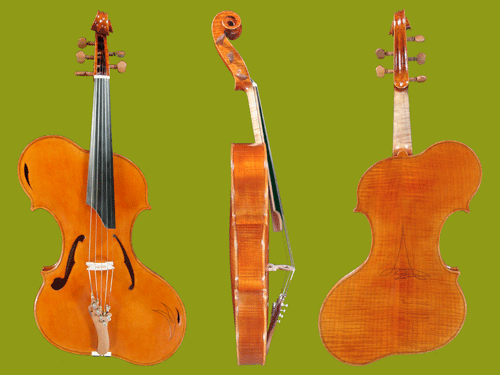|

|

During the first half of the eighteenth century a peculiar type of bowed stringed instrument, called a "viola pomposa," made a brief appearance in the world of classical music. It was different from many of the instruments that had preceded it because it had five strings instead of four. The hope was that the extra string would give the instrument a wider range and greater versatility. The problem was that the mechanical complications of adding an extra string were so great that an awkward posture was required in order to play it. In addition, the extra string put so much pressure on the thin belly of the nstrument that it no longer sounded good. And so the pomposa went out of fashion only a few decades after it was invented.
But during its moment in the sun, more than one composer took interest and the greatest of them was Johann Sebastian Bach. Because of his fondness for the idea of the pomposa he wrote music for the instrument--great music--and, though, for him, it was never performed in a way that would be acoustically satisfying, the dream of some day finding a way to bring these wonderful pieces to life has never died. Performers try to play this music on four-stringed instruments with only compromised success. And, from time to time, violin makers attempt to revive the pomposa. But their efforts, too, are only partially gratifying because they inevitably try to imitate the same design that failed 300 years ago.
The Pellegrina Pomposa has overcome these deficiencies. It is fast catching on, with players sometimes requesting elaborate, custom carvings and paintings, and, these days, there is quite a bit of music composed for five-stringed instruments.
|

